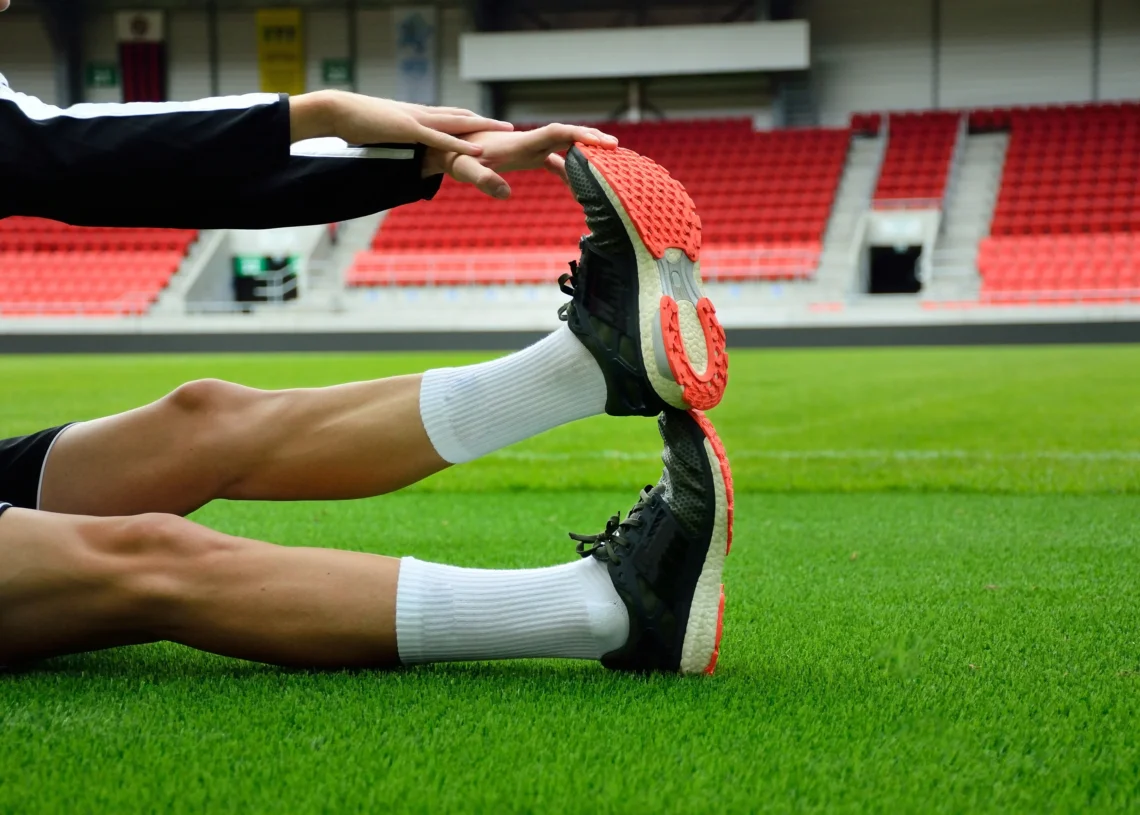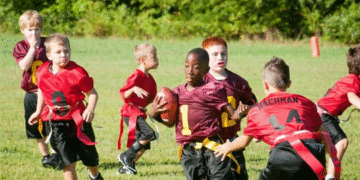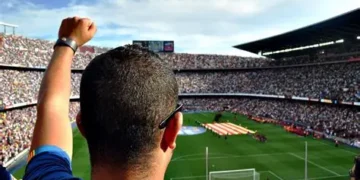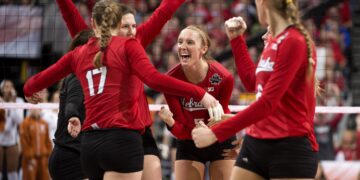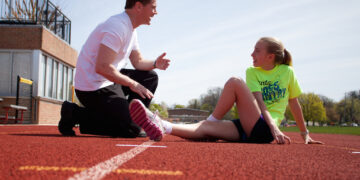The Untapped Potential of Sleep for Athletic Prowess
In the relentless pursuit of athletic achievement, sleep often takes a backseat. Yet, it’s a non-negotiable element for recovery and performance. Prioritizing sleep is key to unlocking athletic potential, fostering both physical and mental fortitude.
Sleep Quality: The Unsung Hero of Athletic Performance
Emerging research underscores the pivotal role of sleep quality in athlete recovery and overall performance. Subpar sleep can impair cognitive processing, diminish attention spans, and heighten perceived exertion, all of which impede physical output and prolong post-exercise recovery.
Interestingly, endurance athletes tend to exhibit superior sleep quality compared to their ultra-endurance counterparts. Consider findings in the National Institutes of Health’s PubMed Central that illustrate this difference:
| Athlete Group | Average PSQI Score (Mean ± SD) | Good Sleep Quality (%) | Poor Sleep Quality (%) | Sample Size (n) |
|---|---|---|---|---|
| Endurance Athletes | 4.2 ± 1.8 | 75 | 25 | 312 |
| Ultra-Endurance Athletes | 6.3 ± 2.5 | 49 | 51 | 178 |
Data source: “Influence of Sleep Quality on Recovery and Performance in Endurance and Ultra-Endurance Athletes” – published in the National Institutes of Health’s PubMed Central, April 3, 2025
This data emphasizes that compromised sleep impacts cognitive functions and amplifies the perception of effort during exercise. These factors can collectively diminish physical capabilities and prolong the recovery process after intense training or competition.
Given these insights, personalized sleep monitoring is essential, especially in demanding sports. By gaining a deeper understanding of individual sleep patterns, athletes and trainers can fine-tune rest strategies, ensuring sufficient high-quality sleep for effective physiological restoration and enhanced mental resilience.
Beyond Traditional Methods: Holistic Recovery Strategies
Holistic recovery methods offer athletes comprehensive strategies that go beyond conventional treatments. These approaches aid in managing heat-related conditions and alleviating muscle fatigue, ensuring a well-rounded recovery process.
Massage and Stretching: Cornerstones of Muscle Relief
Massage therapy and static stretching are fundamental in alleviating muscle cramps. These techniques target localized pain and muscle tightness, fostering relaxation and enhancing blood flow to affected areas. This highlights the significance of addressing physical discomfort through hands-on approaches.
Proper hydration and sufficient rest are also critical for athlete recovery, particularly in managing heat-related conditions. These simple yet potent strategies support the body’s natural healing mechanisms, aiding in restoring balance and preventing further complications. Prioritizing these elements ensures a more effective recovery.
Sports medicine protocols are increasingly emphasizing individualized treatment plans, acknowledging the unique recovery needs of each athlete. This involves tailoring interventions based on specific conditions and responses, ensuring a more targeted and effective recovery process.
Importantly, athletes should exercise caution against premature return to activity. Allowing ample time for healing and rehabilitation is essential to prevent re-injury and ensure long-term athletic health, fostering sustainable performance and well-being.
In managing heat-related conditions, specific guidelines are essential. The following table, adapted from Virginia Tech Rec Sports’ “Sports Medicine Policies and Procedures 2024-2025,” outlines key considerations:
| Condition | Signs and Symptoms | Management |
|---|---|---|
| Exercise-Associated Heat Cramps | – Visible cramping in active muscles – Localized pain – Dehydration – Thirst – Sweating – Fatigue |
– Rest – Passive static stretching and massage of affected muscle group – Icing affected area – Hydrate properly – Same-day return to activity is not recommended and should be avoided |
| Heat Syncope | – Fainting – Weakness – Fatigue – Pale or clammy skin |
– Lay athlete in cool, shaded area and elevate legs – Monitor vital signs – Hydrate properly – Should be evaluated by physician – Athlete is NOT allowed to return to activity |
| Exertional Heat Exhaustion | – Excessive fatigue – Nausea/vomiting – Headache – Reduced sweating (clammy skin) – Decreased blood pressure – Dizziness/fainting – Excessive fatigue – CNS dysfunction – Core body temperature <104° |
– Treat as Serious Emergency |
source_name: Virginia Tech Rec Sports “Sports Medicine Policies and Procedures 2024-2025” time: 2024-08-27
For exertional heat illnesses, sports medicine emphasizes immediate cooling, hydration, and monitored rest. For example, visible cramping in active muscles may need rest, stretching and massage to the affected muscle group. These guidelines prioritize both immediate symptom management and long-term athletic health.
The Chilling Truth: Harnessing Cold Immersion for Accelerated Healing
Cold immersion offers a potent strategy for optimizing recovery and enhancing athletic performance. By understanding the science-backed benefits of ice baths and cold-water therapy, athletes can unlock new levels of conditioning.
Embracing the Cool: Understanding Cold Immersion
Cold immersion, which includes ice baths and cold-water immersion, is gaining traction in sports medicine. It’s valued for its role in athlete recovery, particularly in managing heat-related issues. Rapid immersion in cold water is crucial for heatstroke, demonstrating remarkable survival rates when implemented promptly.
Effective cold immersion involves specific protocols. These include removing excess clothing, positioning athletes correctly, elevating legs, and monitoring vital signs. Educating athletes about safe cold exposure is also paramount. These protocols are becoming increasingly common in athlete recovery programs.
The growing adoption of cold immersion reflects a broader shift toward science-backed recovery methods. By prioritizing safety and physiological recovery, athletes can unlock peak performance, with a focus on evidence-based approaches to optimize rest and recovery.
Active Recovery: The Secret Weapon for Enhanced Performance
Active recovery can revolutionize training regimens. Integrating low-intensity activities into routines not only aids muscle repair but also boosts overall performance. Understanding the secrets to optimizing recovery days is key.
Defining Active Recovery
Active recovery involves engaging in low-intensity exercises such as walking, swimming, yoga, or even sport-specific technical drills. This approach enhances recovery by stimulating blood flow, which facilitates nutrient delivery and waste removal from muscles. Unlike complete rest, active recovery keeps the body engaged, accelerating healing.
Effective training schedules often alternate high-intensity days with active recovery days. This strategy minimizes the risk of injury and maximizes muscle repair. The key is to tailor active recovery to individual needs, considering the intensity of workouts and overall physical condition.
The effectiveness of active recovery hinges on the muscles targeted. Engaging larger or different muscle groups during recovery periods is more beneficial than stressing already fatigued smaller muscles. This ensures balanced recovery and prevents overuse injuries.
To optimize recovery and long-term readiness, incorporating a variety of activities is crucial. Cycling, dynamic stretching, and other low-impact exercises can be strategically used based on workload and existing injuries. A personalized approach is essential for sustained peak performance.
Bouncing Back: Navigating Injury Rehabilitation with Confidence
Injury can be a significant setback for any athlete, but with the right approach, it doesn’t have to define their career. Understanding the rehabilitation process and adopting strategies that promote both physical and mental well-being are key to a successful return to play.
Data-Driven Rehabilitation
Modern sports medicine increasingly relies on data to guide recovery. Real-time monitoring and individualized rehabilitation plans are essential for optimizing athlete recovery and minimizing the risk of re-injury. Wearable technologies and video analysis play a crucial role in tracking rehabilitation progress, particularly in high-contact sports, enabling a stepwise, evidence-based return to competition.
Rehabilitation is not solely a physical challenge; it’s also a mental one. Extended downtime and delayed therapy can significantly impact an athlete’s psychological well-being. Recognizing this, a growing emphasis is placed on integrating mental health support into the recovery process, helping athletes maintain a positive mindset and stay focused on their goals.
A one-size-fits-all approach to rehabilitation is no longer sufficient. Personalized protocols that consider the individual athlete’s needs, sport, and injury type are crucial for successful recovery. These tailored plans ensure that athletes receive the specific care and attention they need to return to peak performance.
Q&A
Question 1: What key differences in sleep quality are observed between endurance and ultra-endurance athletes?
Answer: The provided study shows that endurance athletes generally have better sleep quality (75% with good sleep quality) than ultra-endurance athletes (49% with good sleep quality). Ultra-endurance athletes exhibit significantly higher rates of poor sleep quality, suggesting the increased demands of ultra-endurance activities negatively impact sleep.
Question 2: How does the text describe the importance of individualized treatment protocols in athlete recovery?
Answer: The text stresses that a personalized approach to recovery is essential. It highlights that each athlete’s needs are unique, and recovery strategies should be tailored to specific conditions, injuries, and individual responses. This personalized approach ensures more effective and targeted recovery, maximizing the chance of a successful return to training.
Question 3: What are some examples of active recovery methods mentioned in the text, and what are their benefits?
Answer: The text suggests low-intensity activities like walking, swimming, yoga, and sport-specific technical drills as active recovery methods. These activities promote blood flow, aiding nutrient delivery and waste removal from muscles. This approach facilitates quicker healing and keeps the body engaged, unlike complete rest, leading to faster recovery.
Question 4: What are some key statistics provided regarding ACL injuries and recovery, and what implications do they have for athletes?
Answer: The text cites statistics indicating that 85% of U.S. patients return to their pre-injury activity level after ACL surgery, yet the ACL reinjury rate remains high (10-14%). This highlights the importance of comprehensive rehabilitation programs to ensure successful recovery and minimize the risk of re-injury, despite a high rate of successful initial recovery.
